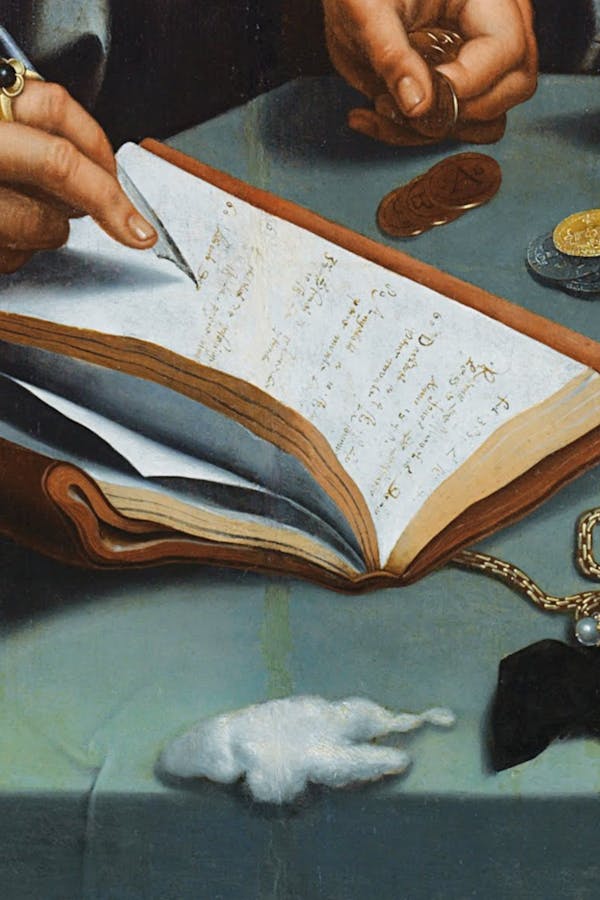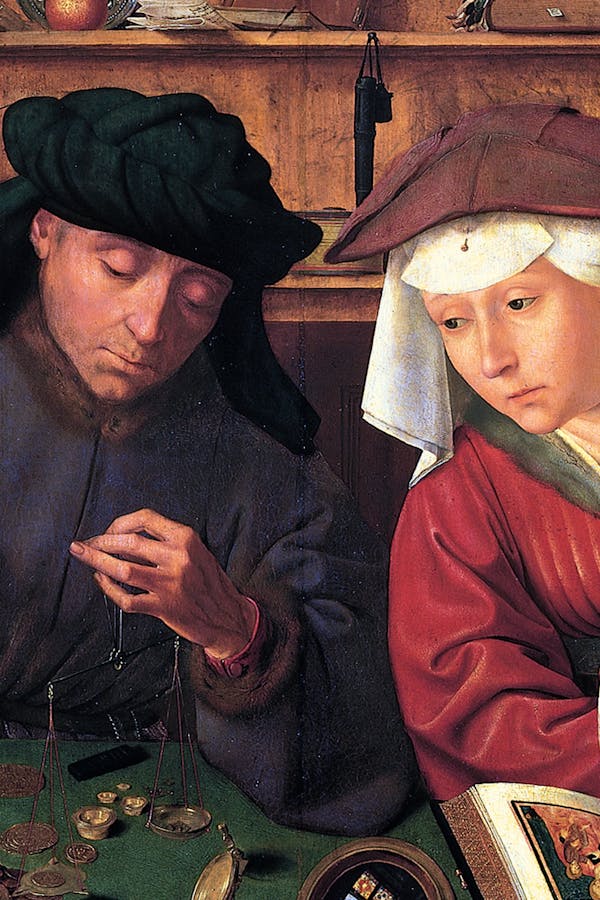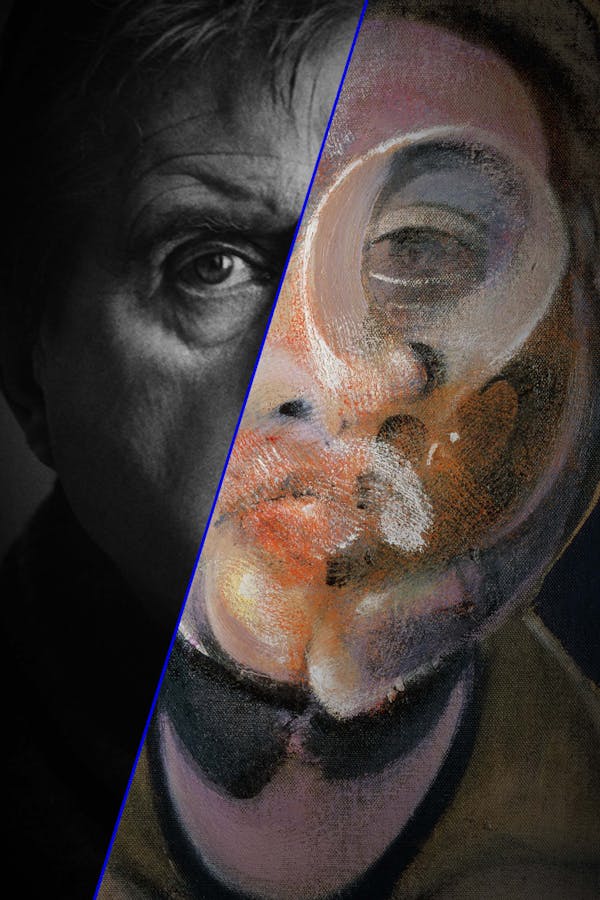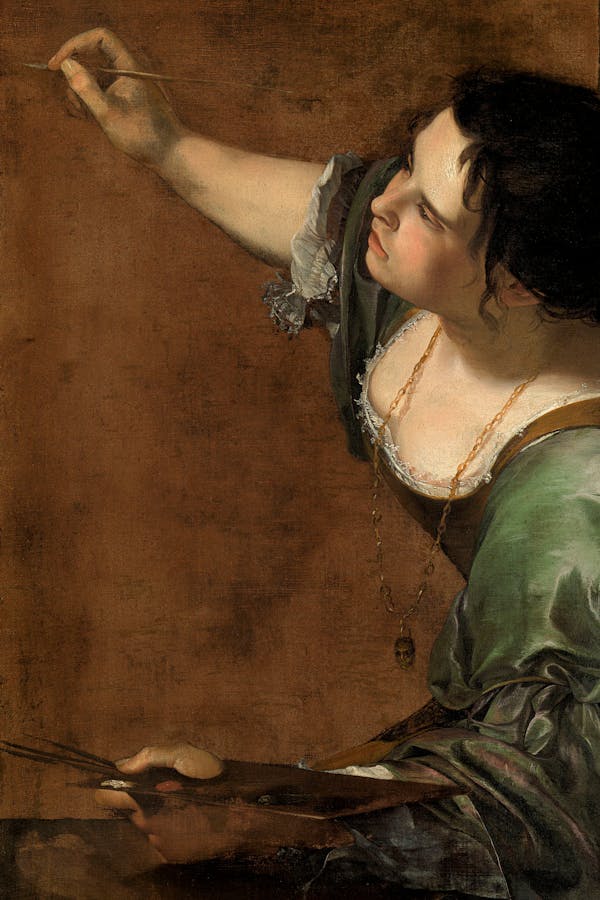Peering into the Warhol-Basquiat friendship
New light shed on the pair's shared legacy
By Tahney Fosdike
Both artists are 20th-century icons; Andy Warhol, associated with the pop art movement, and Jean-Michel Basquiat, with neo-expressionism. Even today, they create noise in art news: in 2017, an untitled 1982 Basquiat sold for a record-breaking $110.5 million, while in 2022, Warhol’s Shot Sage Blue Marilyn went for $195 million.
Though major artists from not long ago (to put into perspective, Basquiat dated Madonna), neither lived into old age. The four decades since their deaths give the exhibition archival flavour as it leans into the unknowable, focusing on the enigma of the two celebrated artists merging their practices between 1984 and 1985.
Though, even a blockbuster exhibition like Painting Four Hands at the Louis Vuitton Foundation in Paris can’t paint their bond in full. Human relationships hold a certain level of privacy. Their mutual friends, and Warhol himself, denied romantic or sexual relations. There is no evidence of power imbalance or abuse, either. Withstanding suspicions of "something more" – from curious spectators then and today – their friends have given most weight to interpreting the relationship as a mutual mentorship. They drew from each other what the other needed in platonic-creative companionship. Simply: we can remember them as both close friends and collaborators.

When the pair began to get to know one another, Warhol had already established his reputation as an art world pioneer. Basquiat, in his mid-20s, had risen to fame after his inclusion in Documenta and the Whitney Biennial. As Basquiat lent on Warhol, Warhol lent back, resulting in 160 collaborative paintings over the final years of their respective careers. These emerged from what their close friend artist Keith Haring called their “third distinctive and unique mind.”
Painting Four Hands scaffolds the “alternating rhythms of the two artists.” The LVF first presented a Jean-Michel Basquiat exhibition in 2018 with an estimated 700,000 visitors and returned in 2023 to further their exploration through his Warhol collaboration. The generous – mammoth, even – showing follows a loose narrative of their partnership from portraits the pair made of each other until their final politically serious works. Dozens of their symbolically dense large-scale paintings across multiple expansive gallery floors, supplemented by their individual works and those from other artists of the same cohort, amply direct viewers into the pair’s shared visual formulas.
Though immediately impressive (and equally immersive), it takes time to tune the eye. Basquiat and Warhol had fairly-accessible oeuvres typical of the time, in as much as they bred the zeitgeist. In their works, Warhol depicts objects correlative with advertising and celebrity culture while Basquiat cuts them up with more gritty, textual forms appropriated with social commentary poking fun at power structures. He also removes a certain glossiness from Warhol’s work, bringing it into a more critical angle needed even today as we might zone out from over-exposure to his Marilyns and soup cans.

“Andy would start one [painting] and put something very recognisable on it, or a product logo, and I would sort of deface it,” Basquiat once explained. “Then I would try to get him to work some more on it, I would try to get him to do at least two things.”
Warhol welcomed this expansion to his developed practice, as his younger peer inspired him to return to painting, commenting, “I drew it first and then I painted it like Jean-Michel. I think those paintings we’re doing together are better when you can’t tell who did which parts.”
In Collaboration (Whales/Umbrella) (1984), a singular loafer anchors an umbrella, a fish, which is on a scale, holds a high heel in its mouth, and some people on fish have more heels. Like this, their symbolism opposes but doesn’t clash, hinging off each other in matrix-like allegories. A series of three crabs paintings saying “crab” with other words like “body lice” and “sharp teeth” are so funny that you sense the friends playing in the studio as you view the high-profile art with hundreds of other people. Rather than producing something performative for the public, their works pull, blend, and balance with distinctive perception.
Their relationship didn’t only exist in abstraction and contrast, though. Friendships form through mutual real-life experience. Even professionally, creative networks ruminate shared pain points to fuel bodies of art. Warhol and Basquiat’s artworks culminate in this phenomenon, emerging from their base in New York, USA. Pieces like Ten Punching Bags (The Last Supper), honing into race, religion and the AIDS epidemic, give insight into their joint criticality of peripheral cultural issues.


Painting Four Hands brings this into focus, though only temporarily. The exhibition features other artists from the same stable – Keith Haring, Jenny Holzer, Kenny Scharf – to embody New York’s 1980s downtown art scene. Though, rather than curated near the beginning of the show when a visitor still feels fresh, the lengthy exhibition squeezes this nuance into some of its final rooms, when one might be losing attention, if not already heading for the exit.
At first, especially in this exhibition experience, their work oozes a simple affinity. But to see Warhol and Basquiat’s sociocultural context as an appendix simplifies their union. Despite their differences in age, race, career, and worldview, the details of their common geopolitics, specifically the ongoing problematics of American life, bound their intercepting practices.
In particular, Basquiat’s practice, first emerging as part of graffiti duo SAMO in the hip-hop hotbed of the Lower East Side, hinged on race politics, as he noted in an interview, “Black people are never really portrayed realistically…. I mean, not even portrayed in modern art enough.”
Jessica Beck, curator at the Andy Warhol Museum, frames their relationship in the context of Micheal Stewart, an African American graffiti artist who died from injuries incurred during his arrest by white police officers. Basquiat, she says, was deeply affected – it could have been him (his peers speculate that the exploitation and pressure of being a Black man in the white-washed art world contributed to Basquiat’s early death). Warhol was receptive, according to Beck, and infused his practice with sensitivity to the experiences of his Puerto Rican-Haitian American peer and, to an extent, the larger Black community, as seen in Ten Punching Bags (The Last Supper). Throughout the exhibition, their co-authored works result in Warhol’s style intersecting with Basquiat’s racial iconography to various degrees of complexity in pieces like Taxi, 45th Broadway, African Masks, and Olympic Rings.
Warhol, however, was also an outsider to the art world that heralded him. In art critic Olivia Laing’s book dedicated to her own loneliness in New York City, she writes about Warhol, who once cited, “I come from nowhere.” The child of immigrants, Warhol lived with a painful shyness that contrasts against the idea of the artist whose own studio was a meeting point for famous creatives. He moved to New York in 1949 as a poor man and manoeuvred his way to success. Left out on multiple fronts, Laing argues, “What Warhol wanted most was to be accepted by the art world.”
Basquiat, too, struggled with identity within the art industry. His sisters, Lisane Basquiat and Jeanine Heriveaux, said as a Black American and child of an immigrant, he wanted to break the mould and expand how he could live, be portrayed, and be perceived.
Intuitively, we might wonder: is their relationship exaggerated for intrigue? Are we reading too much into the inner worlds of professionals that decided to work together? Of course, we can only speculate. Painting Four Hands says only so much about their friendship while letting the art speak for itself. In its archival, mythical state, their partnership has a softness that feels aspirational. A video featured in the exhibition shows the pair being photographed – quiet, shy, nothing extraverted or overexpressed, Warhol even more withdrawn than the other, but at ease in each other’s presence.


The pair first met in downtown Manhattan. Teenage Basquiat, a fan of art celebrity Warhol, sold him a postcard after seeing him at a restaurant. They were formally introduced years later, with their early collaborations initiated by the two artists’ dealer, Bruno Bischofberger. After that, Basquiat and Warhol began collaborating on an almost daily basis. Their output cornerstones Painting Four Hands and leaves the rest of their intense, though short-lived, “third distinctive and unique mind” to the imagination.
Negative press from their 1985 collaborative show reduced Basquiat to Warhol’s “mascot.” Basquiat, again misperceived, withdrew from their friendship. Though, after Warhol’s passing in 1987, his sisters said he barely spoke. Warhol’s absence made him, according to them, alone. He died a year later at just 27 years old in the apartment he rented from Warhol. Beck reminds us that there was no clear end to their friendship, though. If not for their deaths, they could have come together again. Some artworks displayed at the Louis Vuitton Foundation could actually be unfinished.
Perhaps, it’s more worthwhile to think about what was rather than about what could have been. In Boxing Gloves (a series of 80 photographs produced for the poster of Basquiat and Warhol’s negatively-received exhibition), they play-pretend for Michael Halsband’s camera in an assured intimacy. Warhol’s milky but calm face contrasts with Basquiat’s often laughing, more confident one. We’ll never truly know their connection. Though, through art, we can catch its fragments.
Painting Four Hands
05 April - 28 August 2023, Louis Vuitton Foundation, Paris.
Read more
Listen to audiocasts
Discover more artists























